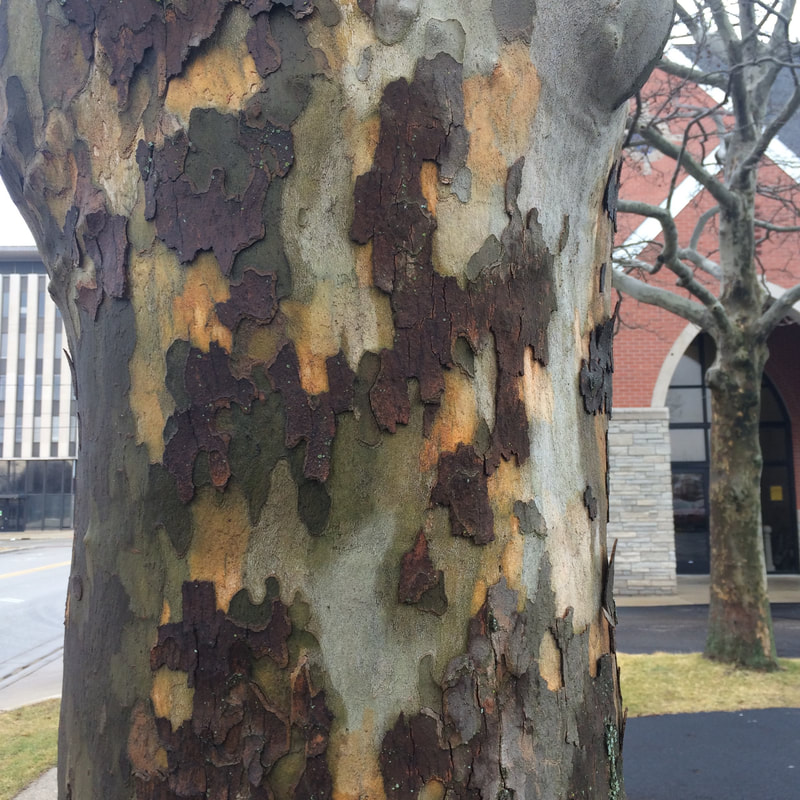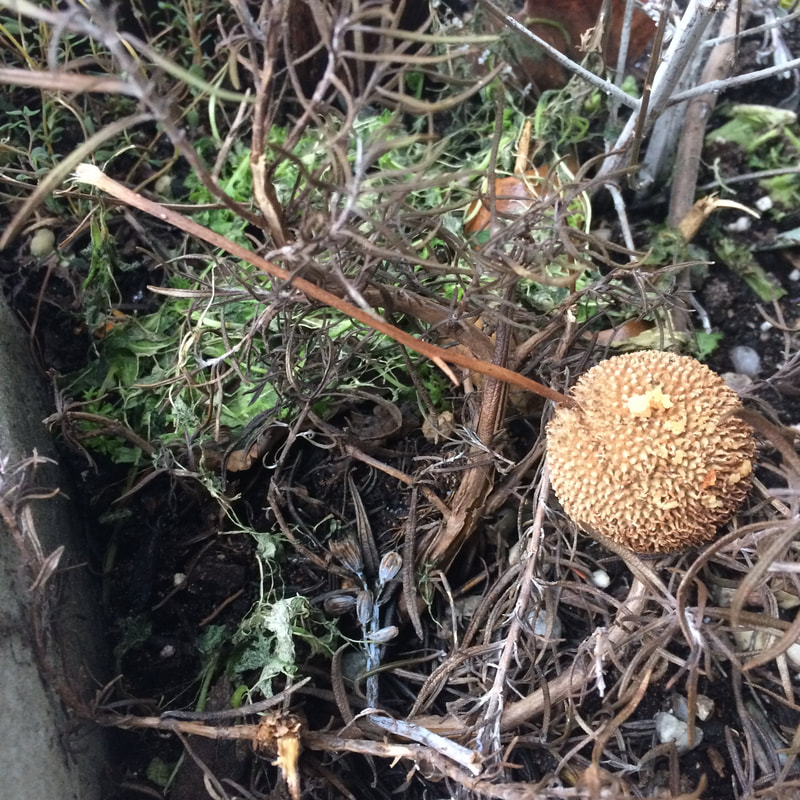|
Article and photo by Donna Iverson
Winter is the perfect time of year to identify trees by their bark. Three of the easiest trees to identify are paper birch, shagbark hickory, and sycamore. Each of these beautiful trees has unique bark ....the stark white of the paper birch, the deeply heavy shags of the hickory, and the mosaic colored scales of the sycamore with its colorful looking plates of grey, green, yellow, brown and cream. In addition to its bark, sycamore can be identified by its large size, up to 100 feet tall, and it's bristly brown round fruit the size of small golf balls that hang from the limbs. In the spring these balls fall and split open to release thousands of seeds that are eaten by birds and can be planted to grow a new tree. "This tree has more visual attractions than an art gallery," writes author Nancy Ross Hugo in her book Seeing Trees. "A true American sycamore shines with the spirit of our places," writes another author of Native Plants of the Midwest. If you want a fast growing large shade tree in your yard, sycamore is a good choice. It grows about 3 to 4 feet or more a year, reaching its full size in about twenty five years. Be sure to plant away from sidewalks and driveways as the invasive roots can crack cement. This tree is not for tidy gardeners either, as its fruit will pepper the ground come spring. The Sycamore's natural habitat is wooded wetlands or wet forests. One of Michigan's native trees, It tolerates an urban environment and at one time was exclusively planted as shade trees in cities. According to geologists, the tree has existed for more than a million years and can live to the ripe old age of 600. It is believed to be the longest lived tree in the world and the largest broadleaf tree in North America. Commercially, it is used commercially to make butcher blocks, crates, siding, baskets and musical instruments because the wood is nearly impossible to split. Backyard animals love the sycamore, especially it's often hollowed out trunk which they use for food shelter, nesting and shelter. The Egyptians used the hollow trunk to make coffins. And with interest in natural burial growing, maybe someday we will too. The sycamore pictured here grows along with several others at St Mary's Catholic Church, the oldest church in downtown Muskegon. It reminded me of the song my Sunday school class used to sing: Zacchaeas was a wee little man And a wee little man was he He climbed up in the Sycamore tree For the Lord he wanted to see Garden tip: one of the safest places to buy uncontaminated lettuce this time of year is at a farmers market. The very safest place, of course, is to grow your own.
0 Comments
Your comment will be posted after it is approved.
Leave a Reply. |
Archives
April 2024
Categories |


 RSS Feed
RSS Feed